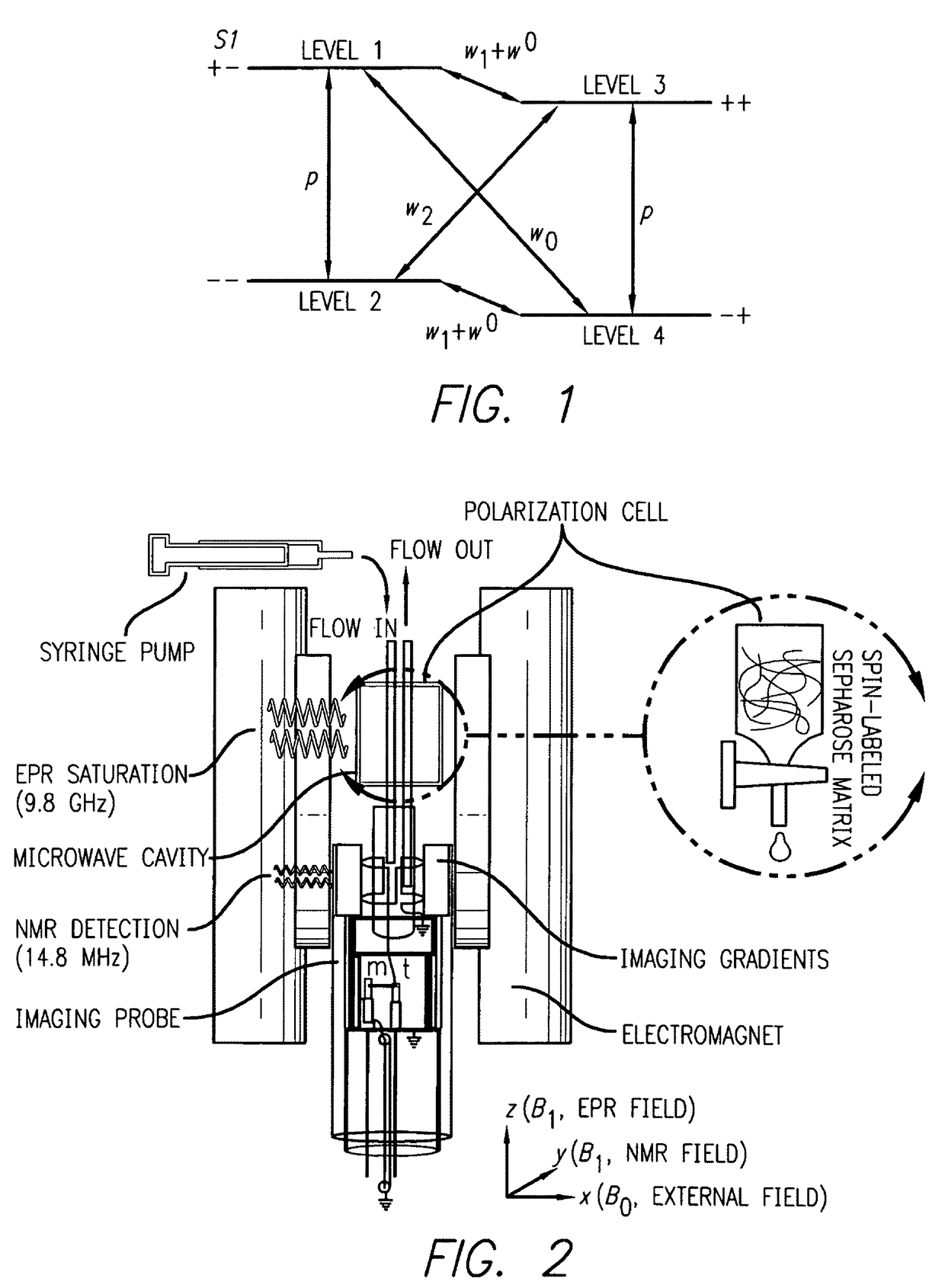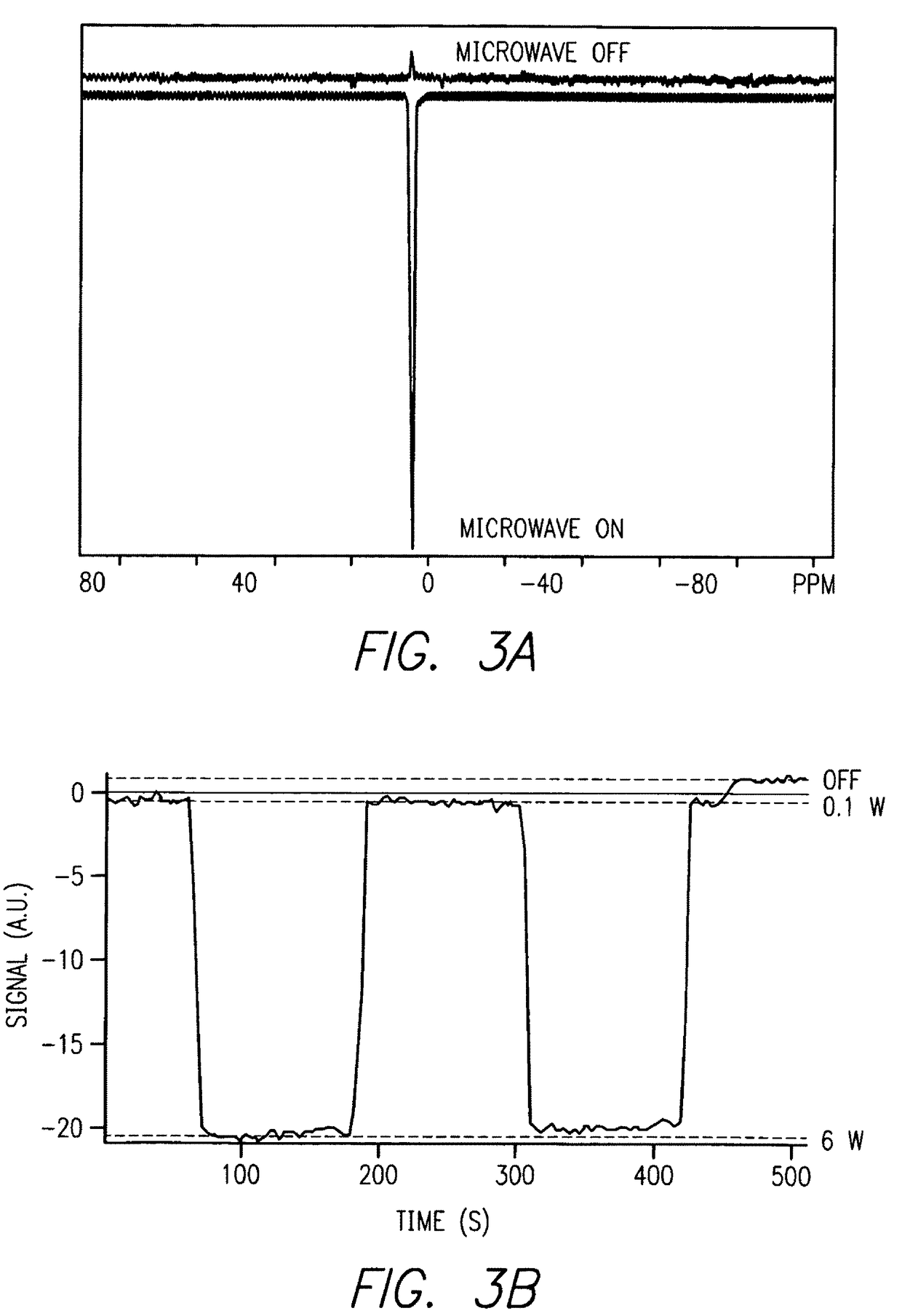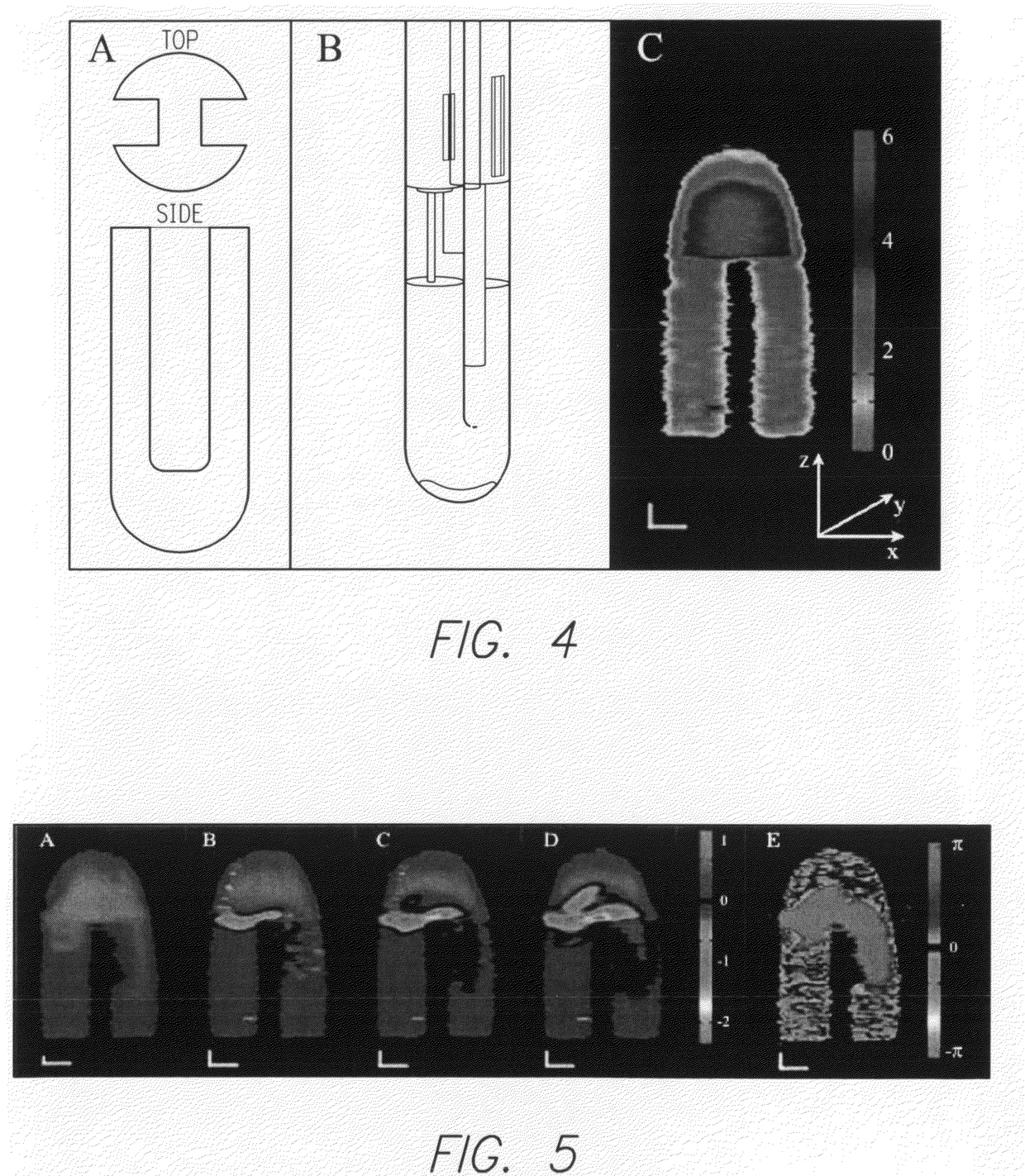Dynamic nuclear polarization enhanced nuclear magnetic resonance of water under ambient conditions
a technology of nuclear magnetic resonance and dynamic nuclear polarization, which is applied in the direction of instruments, drug compositions, and using reradiation, can solve the problems of dynamic water being more difficult to characterize, nmr and mri suffer from signal overlap, and the analytical tools are not capable of directly tracing, etc., to achieve enhanced magnetic resonance imaging
- Summary
- Abstract
- Description
- Claims
- Application Information
AI Technical Summary
Benefits of technology
Problems solved by technology
Method used
Image
Examples
first embodiment
Brief Description of Dynamic Nuclear Polarization
[0041]An in-depth description of the Overhauser effect can be found in several references [77, 91, 93, 94], and is discussed above in describing the second embodiment. For convenience, a brief summary relevant for free radicals dissolved in solution and free radicals attached to other molecules dissolved in solution will be further provided here. The Overhauser effect is typically described with the four level energy diagram shown in FIG. 1, where S represents an electron spin and I represents a nuclear spin (often a proton). Through dipolar and / or scalar coupling, the cross relaxation terms wo and w2 (defined in FIG. 1) are non-zero, thus creating a non equilibrium distribution of S spins by irradiating it's transition can result in signal enhancement of the I spin. This enhancement, E, defined as z> / o>, where o> is the equilibrium polarization is given by [91, 95]:
[0042]E=1-ρfsγSγI,where(1)ρ=w2-wowo+2w1+w2,(2)f=wo+2w1+w2wo+2...
second embodiment
[0068]We present in this embodiment a unique analysis tool for the selective detection of local water on the surface and inside soft molecular assemblies—hydrophobic cores, vesicular bilayers, and micellar structures, protein surfaces and complex coacervates—suspended in bulk water. Through the use of DNP, the 1H NMR signal of water is amplified as it interacts with stable radicals that possess ˜658 times higher spin polarization. To exemplify the utility of this DNP method, we utilized stable nitroxide radicals covalently attached along the hydrophobic tail of stearic acid molecules that incorporate themselves into surfactant-based micelle or vesicle structures. Here we present a study of local water content and fluid viscosity inside oleate micelles and vesicles and Triton X-100 micelles to serve as model systems for soft molecular assemblies. This approach is unique because the amplification of NMR signal is performed in bulk solution and under ambient conditions with site-specif...
third embodiment
[0113]We have demonstrated above that DNP can add important complementary information to ESR on spin-labeled biomolecules as well as provide unique analysis and imaging capabilities. Overall, DNP amplification modulations are gaining increasingly more attention for various applications that require enhanced sensitivity and / or information contrast. Therefore, the descriptions of how to easily add DNP capability to the most commonly available commercial cw X-Band setup, and also how to build an optimized portable DNP setup, are key information in order to be able to carry out the DNP NMR analysis through hyperpolarized water, as described in this invention.
[0114]Here, we report DNP experiments carried out using our custom X-band DNP transmitter, using the commercial cavity and electromagnet system, with which 1H signal enhancement of ˜130 fold have been obtained for water. We also present our completely portable X-band DNP system, where the ultimate goal was to perform DNP experiments...
PUM
 Login to View More
Login to View More Abstract
Description
Claims
Application Information
 Login to View More
Login to View More - R&D
- Intellectual Property
- Life Sciences
- Materials
- Tech Scout
- Unparalleled Data Quality
- Higher Quality Content
- 60% Fewer Hallucinations
Browse by: Latest US Patents, China's latest patents, Technical Efficacy Thesaurus, Application Domain, Technology Topic, Popular Technical Reports.
© 2025 PatSnap. All rights reserved.Legal|Privacy policy|Modern Slavery Act Transparency Statement|Sitemap|About US| Contact US: help@patsnap.com



